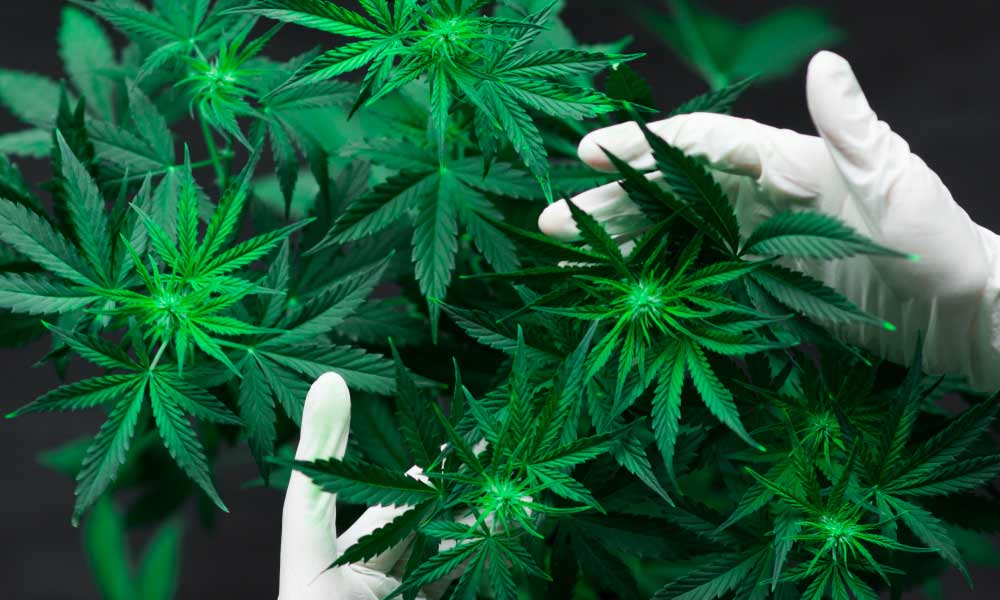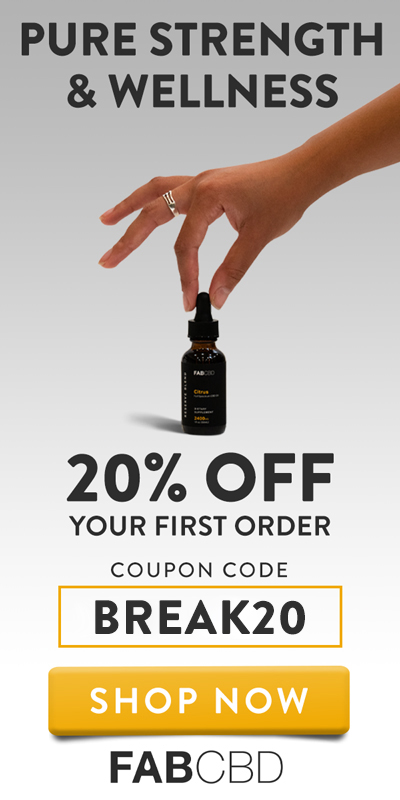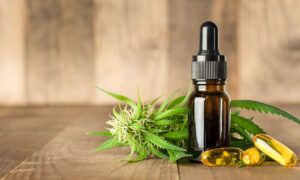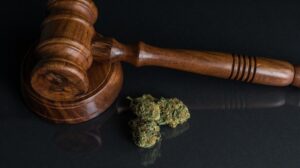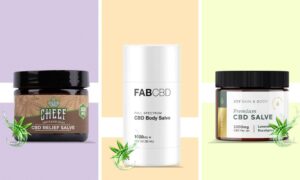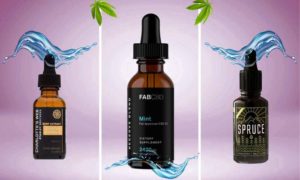The market for CBD products is booming and is estimated to grow to as much as $5770 million by 2028. So it’s no surprise that more and more people are considering whether it’s possible to grow hemp and produce their own CBD-possibly to obtain small quantities of the oil for their own use – keeping control of the quality and guaranteeing the purity of the product. Others are more ambitious, thinking about cultivating the plants on some land and launching a commercial enterprise. A third alternative is to set up an indoor cultivation facility, which has its advantages.
So in this article, we’ll take it step-by-step, explaining everything you need to know about how to grow your own CBD from hemp plant and help you decide if you want to produce homemade or commercial hemp for CBD oil. We’ll start by looking at the unique features of the hemp plant, consider the means of cultivation, and look at extraction methods to help you choose which is right for the end product you want to achieve.
What is Hemp?
Hemp is a variety of Cannabis sativa L. It is a dioecious plant, which means that it can be divided into male and female specimens – and this is important for hemp growers. Humans have found many uses for hemp for more than 10,000 years. While most of the hemp grown today is cultivated, there are many locations around the world where it grows naturally. Experts believe that it first appeared in South and Central Asia and was able to spread across the globe for hundreds of years due to its adaptable qualities. There are good reasons why it earned the nickname ‘weed’ – its resilience and ability to thrive almost anywhere are incredible.
Are Hemp and Marijuana the Same Thing?
It’s sometimes mistakenly believed that hemp and marijuana are two distinct plant species. They’re just different names for cannabis, which is one of the Cannabaceae family. What separates them is the unique chemical compounds they contain. Although there’s no botanical difference between them, there’s an important legal distinction.
What separates them is the THC (tetrahydrocannabinol) content. THC is one of the 150 or so chemical compounds (cannabinoids) found in the cannabis plant. It is psychoactive and creates the ‘high’ that cannabis produces when smoked or ingested in other ways. Plants grown for marijuana contain 5%-30% THC.
The term “hemp” is used to mean cannabis that contains 0.3 percent or less THC content by dry weight. It is extremely unlikely to produce a high – you’d have to take a vast amount to produce that effect. Since the passing of the 2018 Farm Bill, hemp products have been legal in the USA, although cultivating hemp plants still require a license.
Hemp Plant & Varieties
The first thing to know when you’ve decided that you want to grow hemp is that there are three distinct varieties: these are grain/seed, fiber, and CBD, and each has a different use. Each uses a different seed requires different cultivation techniques and equipment. The plants are quite distinct. Here’s a quick guide to spotting the different types of hemp.
Hemp for grain and seed: These are slender plants that grow 5-7 feet. They’re planted in May or June and reach maturity 100-120 days after planting.
Hemp for fiber: Also slender, these plants can grow from 10-18 feet. Planted in early May-early June, they can be harvested after 45-70 days. After cutting, they’re left to field-dry before baling.
Hemp for CBD: Unlike the other two varieties, hemp plants for CBD are bushy. They reach heights of 6 to 12 feet. Starter plants tend to be transplanted outside by mid-June and harvested by mid-October. The plants are often cut by hand and taken to drying sheds.
Male Vs. Female Hemp Plant
Why does the gender of a plant matter? If you’re growing hemp, it’s critical because only the female plants grow buds. The ratio of male to female plants is typically 1:1 – for every male seed you get, there’ll be a female seed. Unless you buy feminized seeds online (which are obviously more expensive) or create them from two female plants, you’ll have to discard around 50% of your starter plants.
The Cannabis Plant Life-cycle.
Hemp plants have two distinct life stages. The first is the vegetative stage. This is when the plant focuses all its energy on growing taller. The second is the flowering stage, which starts when the plant is around 6 weeks old. At this point, it becomes possible to identify whether it is male or female because it develops pre-flowers or buds. Female buds are more pointed than male buds, and they have wispy white ‘hairs’ growing from them. When hemp is grown for CBD, male plants are typically discarded.
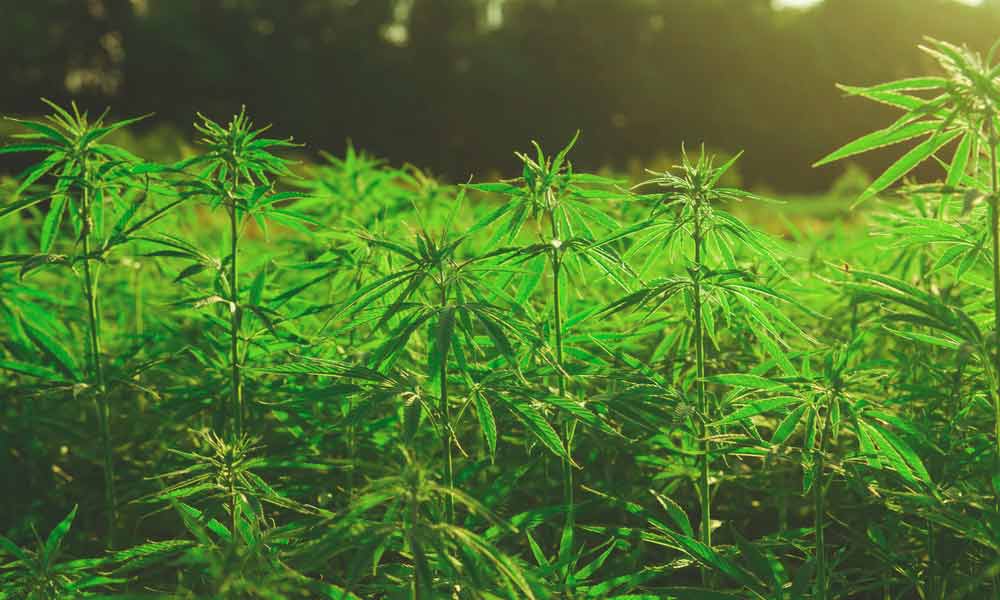
Growing Hemp Plant Indoors
An increasing number of growers are choosing indoor cultivation, which they claim has several advantages over outdoor growing.
Climate controlled: Due to the controlled temperatures indoors, the hemp plants are not subject to sudden fluctuations. This allows them to reach their full genetic potential and achieve the highest concentrations of cannabinoids possible. Indoor-grown plants are also richer in terpenes, which give CBD products their distinctive smell and taste.
Optimum Light: The optimum light levels can be maintained, regardless of how much natural sunlight there is, how cloudy it is outside, or the hours of daylight. During the vegetative stage, plants can be flooded with light to encourage growth – which can be as much as 2 inches per day!
After this, the light is rationed, causing the plant to produce CBD-rich flowers earlier than it would in an outside environment. This means that the grower is not limited to a single growing season in the summer but can produce several high-quality crops in a single year. Obviously, several yields per year will mean greater profits from the same space.
No pesticides needed: Indoor growing virtually eliminates the variety of pests that can attack and destroy outdoor crops. This is especially important for organic CBD products, as no traces of pesticide residue will remain in the extracted oils.
Contaminant- free: Indoor plants will be free of any heavy metal residues, toxins, or other contaminants which may be found outdoors in soil.
Disadvantages of indoor cultivation: So what are the disadvantages of indoor hemp cultivation? By far the most important is cost. The physical space, power, and labor costs are higher than in a traditional outdoor environment. However, these have to be balanced against the higher yields, continuous growing season, a higher concentration of CBD achievable, and reduction of costs related to pest and disease control.
If you’re thinking about growing a small, independent crop without a huge investment in land or machinery, then indoor cultivation is something to consider seriously.
Growing Hemp Plant Outdoors
This is the traditional way to raise hemp plants – right out there in nature. Most of the leading CBD brands boast about how their plants are raised in rich, US soils in Virginia or Kentucky. If you like the idea of your hemp growing in rhythm with natural cycles and benefiting from real sunlight, it’s a natural choice. However, there are several factors to consider.
Soil
- The right soil is essential for growing healthy plants, so get an online soil test or get it tested at a local agricultural center. For hemp plants to thrive, they need soil with a pH of 6-7.5.
- Well-aerated, fertile soil rich in organic matter will produce the best yield.
- Good drainage is essential to prevent root rot, which will kill young plants and destroy your crop before it has the chance to develop.
- While it’s possible to grow hemp in sandy soil, it will need additional irrigation and fertilizers.
- Whatever the soil you’re working with, be prepared to add mineral supplements throughout the growing season – this will add to your production costs.
Sunlight: Full sunlight is best. Hemp plants typically need 12+ hours of sunlight per day to achieve a good crop, though they’ll survive in as little as 6 hours.
Water: Unless you’re in an area with 20-30 inches of rainfall during the growth cycle, you’ll need to irrigate your plants. With the increasing summer temperatures we’re experiencing in most parts of the country, consider the cost of additional water.
Pests: Like all plants, hemp can be affected by pests, fungi, viruses, bacteria, and root rot, so they need to be inspected daily. Plants with any sign of disease should be removed and disposed of immediately. Especially if you’re growing organic hemp, any chemicals you use to control pests and diseases have to comply with the USDA National List of Allowed and Prohibited Substances.
An alternative and environmentally-friendly approach to pest control would be to use biological controls, such as ladybugs, spiders, and certain wasps, to eat pests that might attack and damage your crop. If they’re not common in your area, you can buy from specialist suppliers.
Harvesting
Hemp is harvested when cannabinoid levels are at their peak (typically around October). This can be done by hand or by machine in larger industrial quantities.
Extracting CBD from Hemp
By using different extraction methods of CBD it is possible to extract the compound from hemp leaf or flowers with great efficiency. If you’re only growing a very small quantity of hemp, For home/indoor growers using ethanol or ethyl alcohol to extract CBD is the best way to go. However, there are hazards involved as the alcohol is highly flammable, so you should consider whether the risks outweigh the benefits.
If you’ve grown hemp in any sizeable quantity, far better to take it to a specialized lab, where, if they use ethanol to extract the cannabinoids, it will be under strict safety conditions. However, thanks to the latest technology, there are several other popular methods now used to extract CBD oil from flowers and leaves.
CO2 Extraction: Pressurized carbon dioxide is used to force the oil from the plants. There are two ways this can be achieved: sub-critical and super-critical. Sub-critical extraction is a low-temperature method used to preserve the heat-sensitive compounds and extract lighter oils. Super-critical is now the most commonly used method of extraction. It allows more of the cannabinoid compounds to be extracted to maximize the health-giving benefits of the oil. It’s also quite fast.
Water Extraction: Plant trimmings are repeatedly filtered through ice or dry ice until the oil settles at the bottom of the mixture, and excess water can be removed. Water extraction is increasingly preferred as an alternative to ethanol, as it’s considered more environmentally friendly and overall a ‘cleaner’ alternative.
There are certainly a lot more extraction methods of CBD from the hemp plant. Pick the one that suits your need and go with it.
Conclusion
We hope this article has provided an overview of the factors you’ll need to consider before growing your own hemp for CBD. Take your time, be prepared to experiment, and get ready to enjoy the fruits of your labor!
FAQs About Growing Hemp for CBD
Here are some of the most frequently asked questions answered for beginners who just want to try growing the hemp plan and make their own CBD product at home:
- How much CBD does a plant produce?
The short answer is that one plant will, on average, produce approximately 1lb of oil. However, there are many variables, such as the genetic quality of the plant, the growing medium (the soil), the harvesting, and the extraction method used, among others. It also depends on the nature of the end-product you’re looking to achieve.
- What are the likely setup costs?
If you’re considering entering the booming CBD production industry, it’s important to consider setup and operating costs. Assuming that you already have the land, here are some of the considerations.
- Hemp cultivation license: the exact cost will depend on the acreage you’re going to plant.
- Seeds/starter plants
- Soil tests
- Water tests
- Cost to till the land in preparation for planting
- Nutrients
- Irrigation system (in dry areas)
- Labor costs
- Also, you’ll need to consider how you’re going to dry the harvested crop in preparation for extraction.
- Extraction costs
- Is it completely legal to grow hemp anywhere in the USA?
The 2018 Farm Bill legalized hemp’s agricultural production, making it possible to develop serious hemp-farming operations. However, this doesn’t mean there are no controls on its production. Growers must apply to receive approval for hemp cultivation, and the cost of the license will depend on the acreage.
All hemp plants must have 0.3% THC or less. If you live in a state where recreational or medical cannabis/ marijuana is permitted, you might be able to grow up to six plants without applying for a specific license. However, the best advice is to check with your local authorities to confirm the legality of CBD cultivation before investing in hemp seeds or starter plants.
- How much space do hemp plants need?
A 2018 trial by the University of Vermont concluded that spacing plants at 1 per 1’x1′ gave the best yield and lowest number of unmarketable flower buds on a per-acre basis. The 1’x1′ spacing yielded 3669 lbs per acre of the dry flower bud. (A square acre measures approximately 69.57 yards, or 63.61 meters, on each side).
Plants given more space (5’x5′) had a higher yield and a greater proportion of unusable buds. So this suggests that less isn’t always more! A degree of experimentation will be needed to identify the optimum spacing for your plants and growing conditions to produce the greatest yield of high-quality flowers. Identifying and discarding unmarketable flowers will require time and therefore cost money.
- Is it better to start with seeds or clones?
Growing from seeds is more challenging and can actually be the more expensive option. You’ll need to experiment with irrigation and drainage – learning by experience is great, but be prepared to invest time and resources before seeing any positive results.
Another issue is that most hemp seeds are imported from overseas. The drawback is that they’ve often come from plants grown at high altitudes. While this tends to keep THC levels low, it can be more challenging to remain within the 0.3% THC legal threshold when cultivated in American soils.
Clones are more expensive, but a lot of the selection work has been done for you, so the plants are more likely to survive. Until quite recently, though, sourcing hemp clones for CBD has been much more challenging than seeds. However, as always, when demand grows, the market responds.

